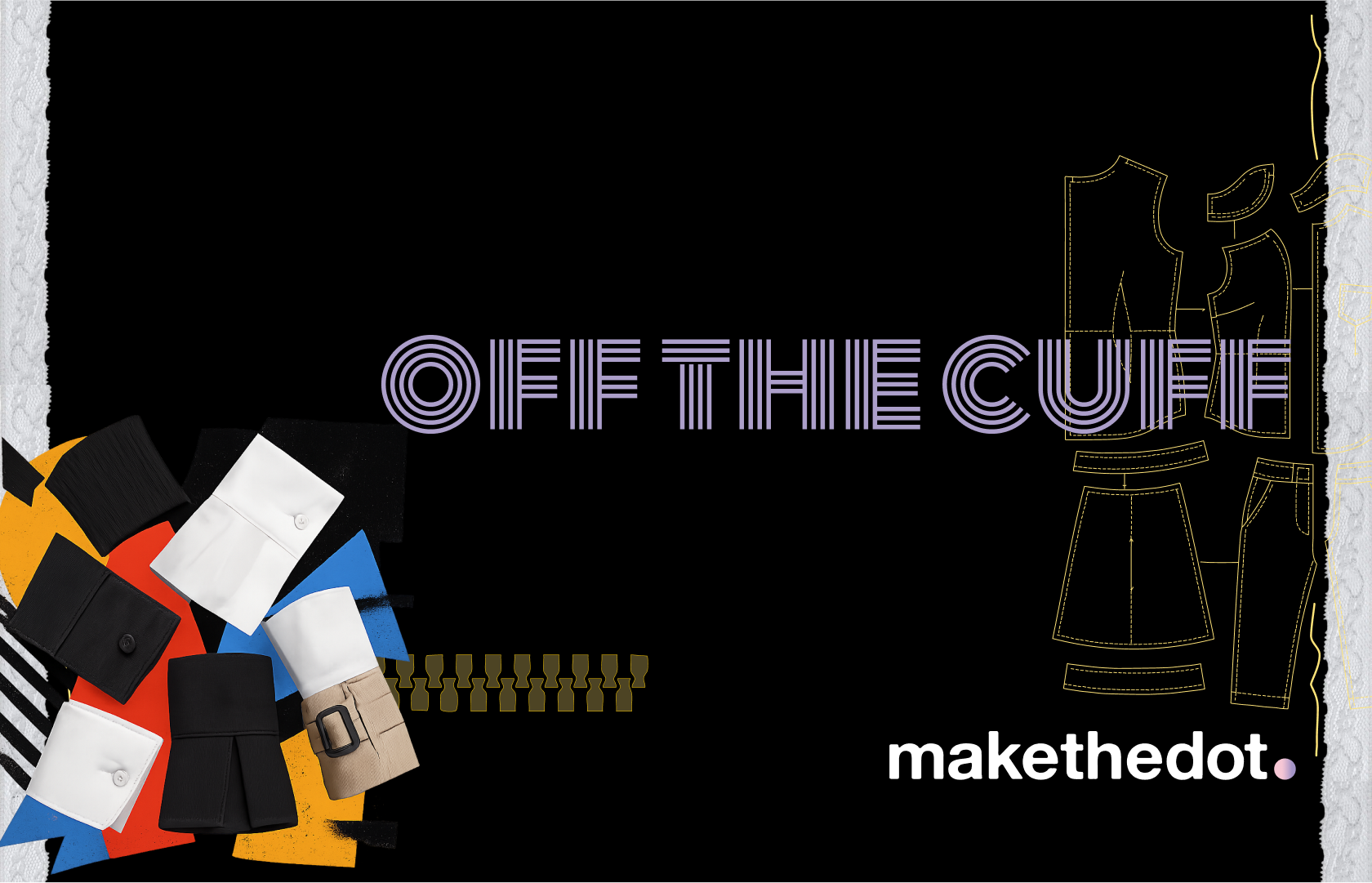A Fabric That Barely Exists
Lace has always been a paradox: a fabric defined as much by its absence as its presence. It is a fabric made of air shaped by thread, yet for centuries it has carried the weight of wealth, power, and desire. From the stiff ruffs of Elizabethan portraits to the whisper-thin veils of haute couture, lace has traced the outlines of how we see beauty, gender, and craftsmanship.
Today, you might find lace on a Dior runway, a thrifted blouse, or a handmade doily in your grandmother’s drawer. But its story begins in an age when every thread was precious and every pattern carried a secret code of status.
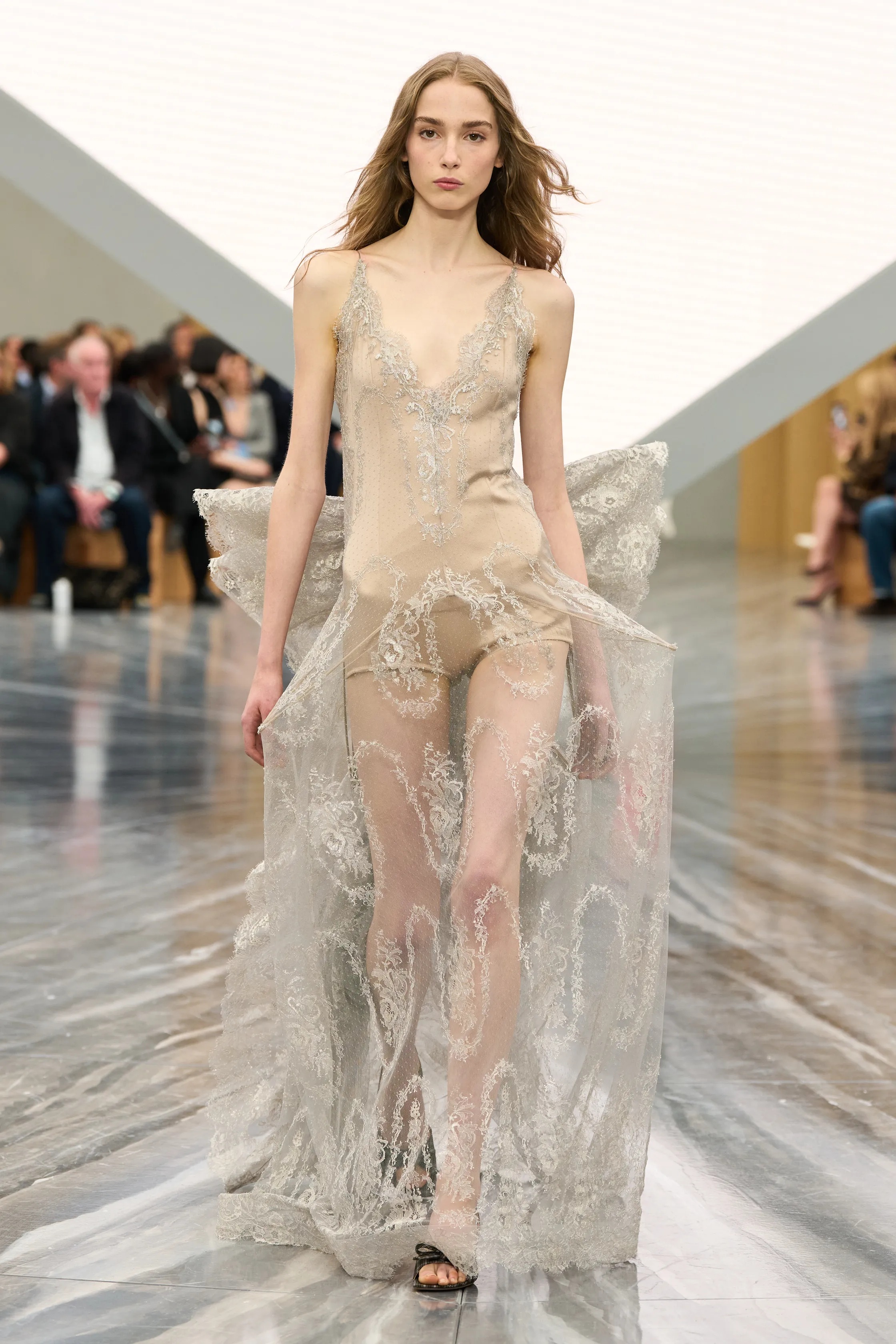
The Birth of Lace: A European Obsession
The word “lace” comes from the Latin laqueum, meaning “snare” or “noose,” which is a fitting origin for a fashion phenomenon that would soon ensnare the European elite in the late 16th century. There is no exact date for the invention of lace, but its foundations likely emerged from humble, utilitarian roots in farming and fishing communities, where simple knotted patterns formed mesh fabrics used for nets and bags. This was a cost-efficient technique that required less material than traditional weaving on a loom.
Handmade laces developed in the early 16th century in the Venice and Milan areas of current Italy and in the Flanders area in northern Europe.
Two styles emerged: needle lace, created by making looped or knotted variations on the buttonhole stitch with a threaded needle on top of a pattern, and bobbin lace, created by twisting, crossing, or plaiting multiple threads wound on bobbins, spindles on which thread is bound. While both were incredibly time-consuming to make, as bobbin lace became more complicated in design, it became a cheaper and faster alternative to needle lace.


Despite the advancement in lace-making technology, the craft was extremely expensive to make, as a square centimeter could take 5 hours to make. Furthermore, high value materials, such as fine linen threads, silk threads imported from China, and even gold and silver threads, were materials often used in lace. Naturally, lace became the symbol of Renaissance luxury, its dense floral reliefs adorning the robes of popes and princes. Across the Channel, Queen Elizabeth I’s starched lace collars fanned out like suns — both armor and aura. Lace became an early form of wearable power, as political as it was decorative.
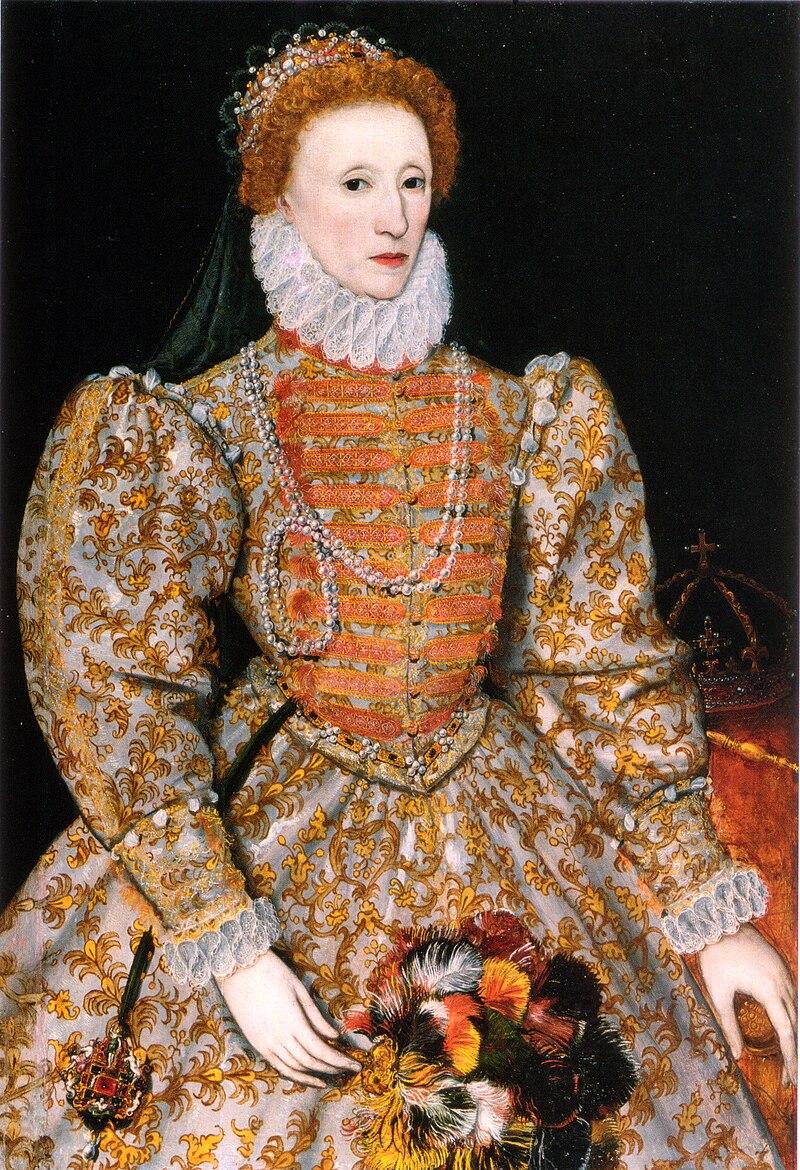
By the 17th century, lace had become Europe’s soft gold. Monarchs built entire economies around it. France’s Louis XIV established state-sponsored lace workshops to keep money from leaving the country. In England, laws restricted who could wear imported lace. Smugglers hid contraband lace under cloaks and in coffins.
A Neckwear of Male Identity and Power
In the 17th century, lace played a prominent role in elite men’s attire, particularly in neckwear (collars, falling bands) and cuffs. The adoption and display of lace signified status, refinement, and sartorial power.
_-_Louvre_Museum.jpg)
One of the dominant collar forms was the falling band: a broad, flat, white collar often trimmed with lace, which replaced the earlier stiff ruff and became widespread after the first half of the century.
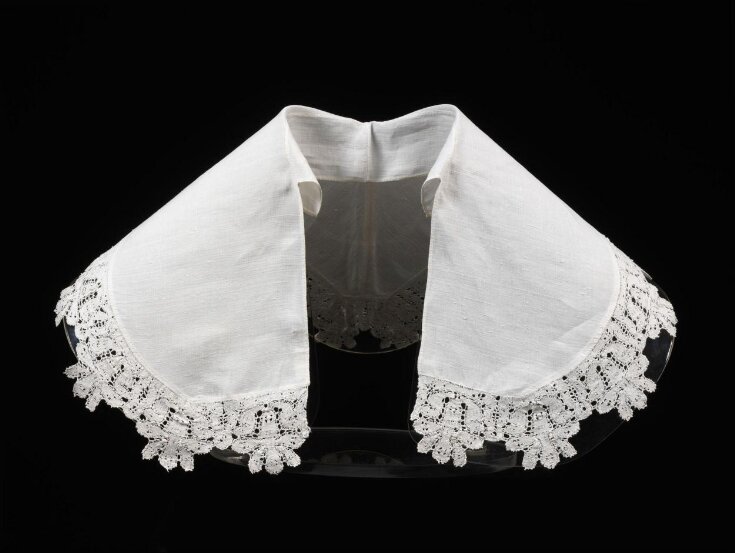
Lace collars were frequently matched by lace cuffs—the cuffs of the shirt or doublet being decorated with similar openwork lace. These paired sets of collar and cuffs were a customary ensemble for men of fashion.

Furthermore, starting in the mid-17th century, men’s shirts sometimes featured a jabot, a decorative lace ruffle or insert at the front opening, hanging downward and often visible beneath a waistcoat or overcoat. The jabot evolved in this period as a visible lace embellishment of male dress.

A Canvas for Stylistic Innovation
In women’s dress, lace appeared more extensively and in more varied contexts than in men’s attire. It functioned not just as border trim, but as structural ornament: collars, ruffs, rebatos, cuffs, caps, coifs, and decorative inserts.
Elite women at court and in wealthy circles incorporated lace into their collars, ruffs, and coifs. For women, lace was a sign not only of wealth but of refinement, beauty, modesty, and adherence to courtly elegance. Because lace frames the face and neckline, it carried visual weight in portraiture as a halo-like decorative aura.
Women’s lace often employed reticella (geometric needle lace) and punto in aria (freestanding needle lace off the ground). Reticella was especially popular in early 17th century collar and cuff work, favored for its lacy grid structure and classical geometry.
.jpg)
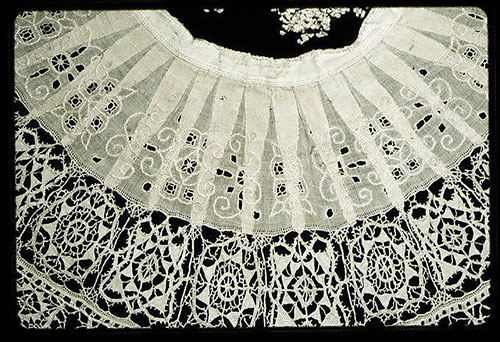
As fashion progressed, more ornate Venetian needle lace (Point de Venise) was also used in women’s collars and decorative dress panels, especially among aristocratic circles. The most renowned was Gros Point, distinguished by its bold, three-dimensional Baroque patterns that seemed almost carved from ivory. Lighter variations soon followed, including Rose Point, with raised but more open motifs, and the delicate Point de Neige, where clusters of tiny loops created a snow-like texture. A flatter, simpler style known as Point Plat was also made but never achieved the same acclaim.
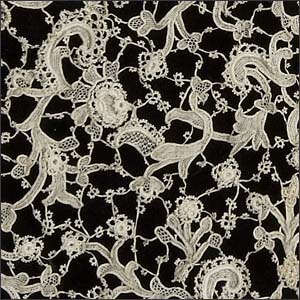
In France, Point de France began to emerge as a desirable domestic alternative to imported Venetian lace. The late-17th-century Point de France lace used motifs such as suns, fleurs-de-lis, and crowns, echoing Louis XIV’s iconography.
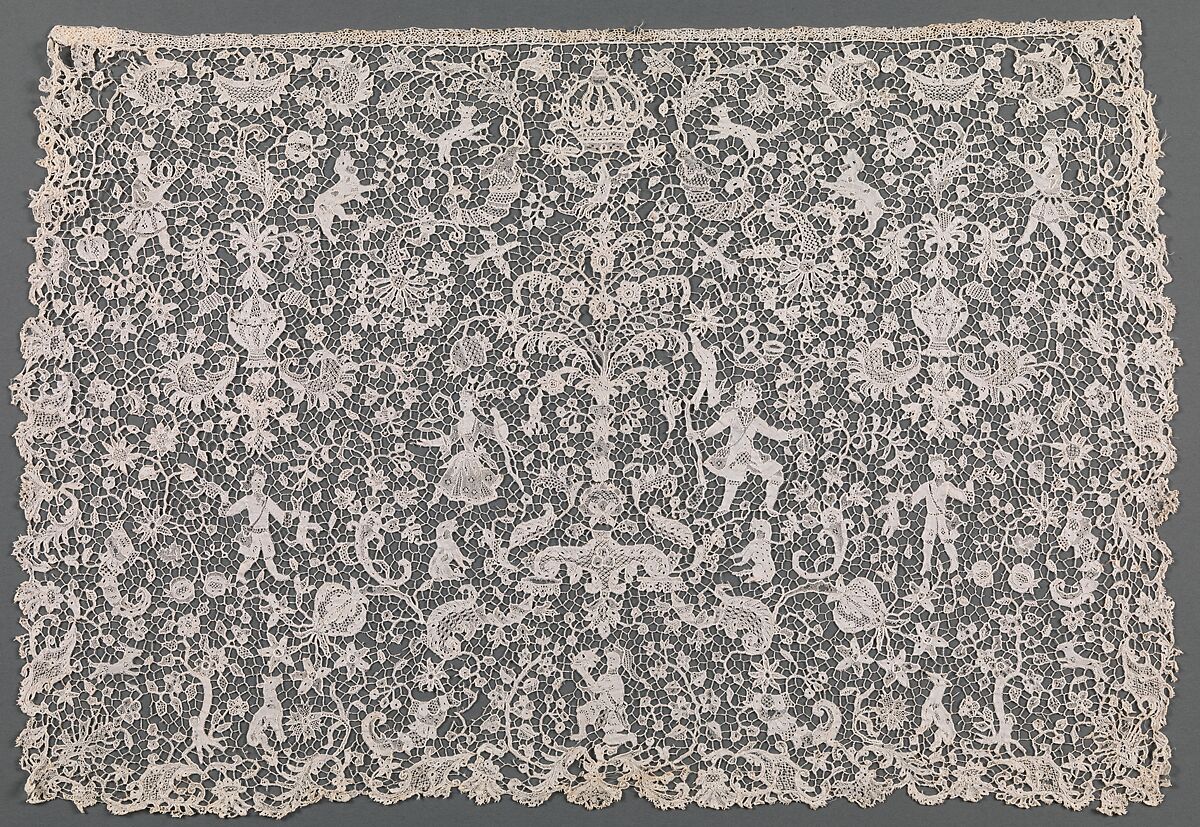
Because women’s clothing allowed wider surfaces and decoration, lace became a canvas for evolving artistic techniques, so lace in women’s garments tended to push stylistic innovation more than in men’s relatively constrained neckwear.
18th Century: Rococo, Refinement, and the Art of Sheerness
Through the 18th century, lace fashions shifted from the dense, sculptural needle lace of the 17th into more delicate, airy patterns and open mesh grounds. By this time, French needle laces (e.g. Alençon, Argentan) and Flemish bobbin laces (e.g. Binche, Valenciennes, Mechlin) became dominant in the high-end lace market.
The lace style known as Chantilly lace (a fine black bobbin lace) became fashionable in France in the mid-18th century. Mechlin lace (Flemish bobbin lace) was highly prized, especially for its use in ruffles, cravats, corset trims, and hair accessories (coiffures de nuit).
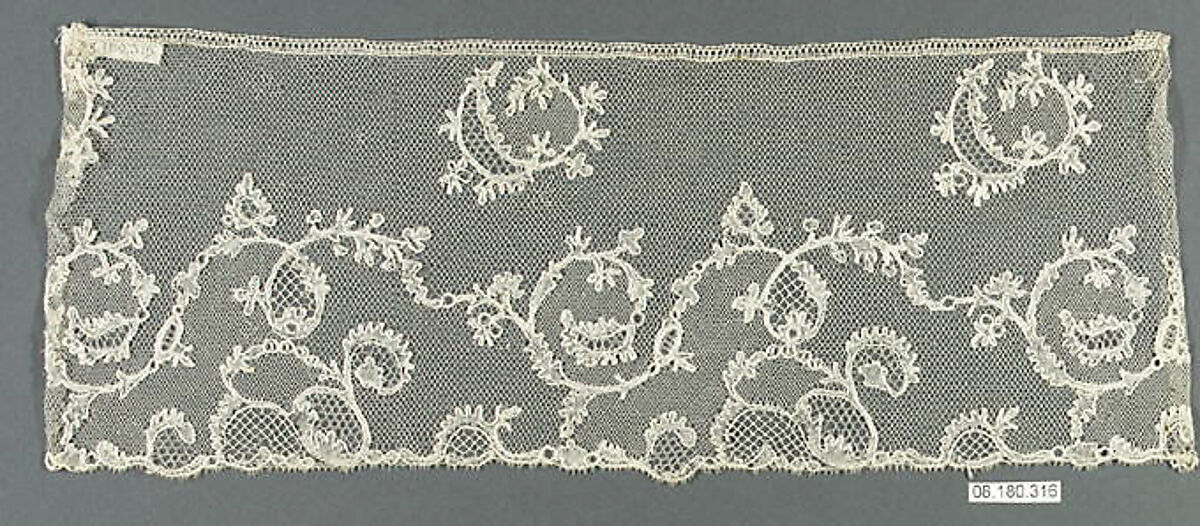
Another variation, Blonde lace (a silk bobbin lace made in France), grew in popularity during the late 18th and early 19th centuries. The natural color of the silk thread gave it its name; the bold floral motifs made it well suited to the gathered trimmings of period garments.
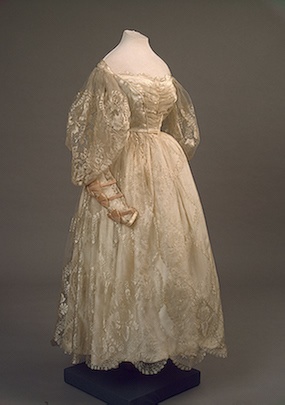
Industrialization and Democratization in the Early to Mid 19th Century
Late in the 18th century, early machine lace experiments began, but it was 1809 when John Heathcoat invented a machine capable of producing a stable “net” ground (that would not unravel when cut), which made more complex lace feasible by machine.
Over the course of the 19th century, lace machinery improved rapidly. By mid-century, many types of hand lace had machine-made equivalents. Lace became more widely accessible to middle and upper-middle classes. Whereas lace had once been reserved for aristocracy, by Victorian era it appeared as decorative trimming on everyday dresses.
Because machine lace could be produced at scale, ornamentation expanded: dresses featured lace panels, lace overlays, and lace dresses themselves rather than just trimming. The interplay between volume, texture, and layering became important in Victorian aesthetics.
Yet, lace became strongly associated with bridal wear and purity, particularly after Queen Victoria’s wedding in 1840, when she wore a lace veil and dress (Honiton lace). This event cemented lace’s status as a symbol of virtue and romance in Western bridal culture.
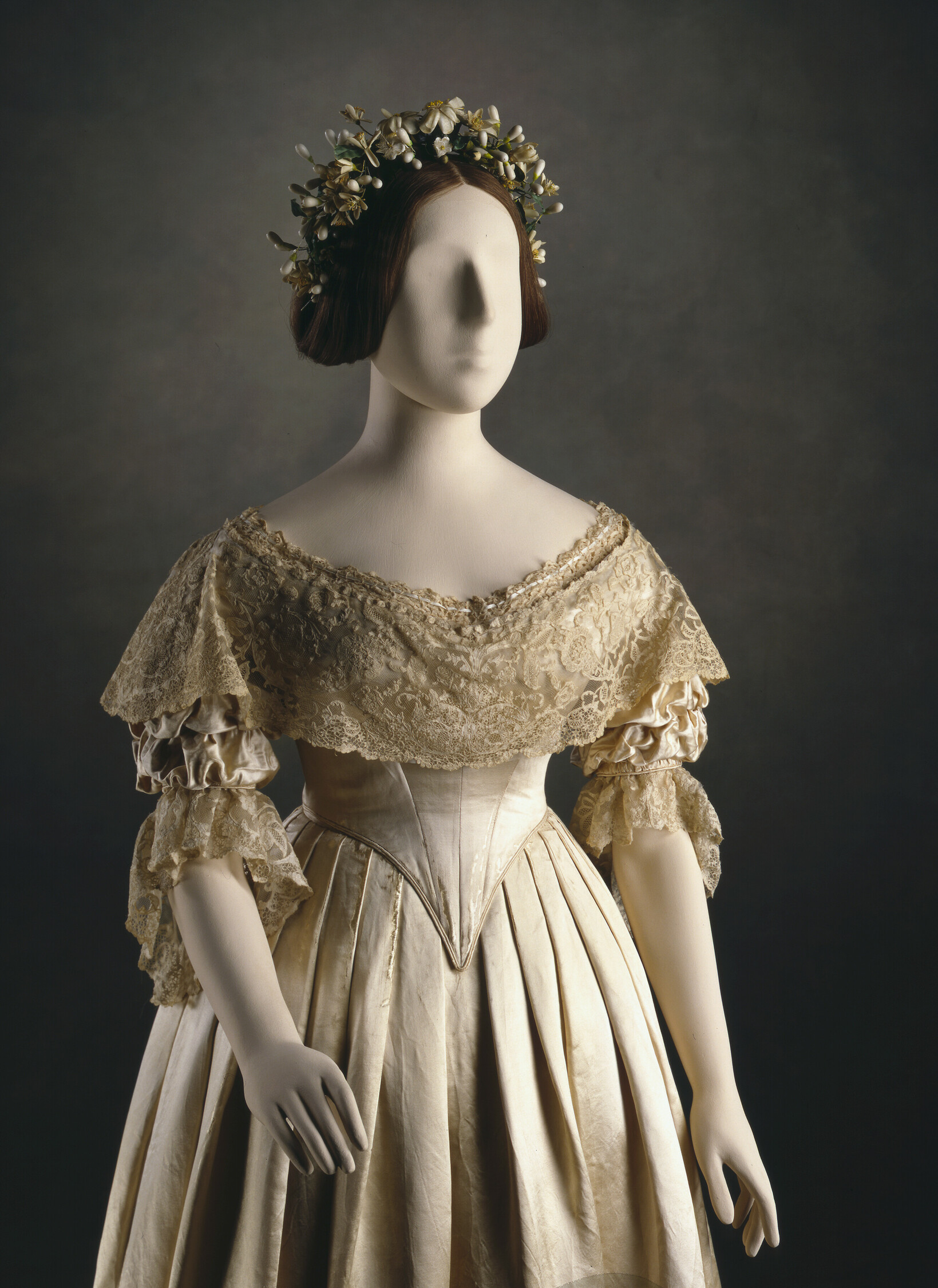
Early 20th Century: Lace as Intimate and Structural Fabric
In the early decades of the 20th century, as fashion silhouettes became simpler and less adorned, lace moved inward. Rather than being purely a decorative overlay, it became integral to lingerie, undergarments, and structural surfaces.

Designers such as Coco Chanel and Madeleine Vionnet embraced lace not just as border trim but as textural and structural elements, integrating it into bias cuts, draped panels, and soft lines. The incorporation of synthetic fibers, such as rayon, further expanded possibilities – lighter weights and new drape effects allowed lace to function as part of the garment’s architecture rather than only as decoration.
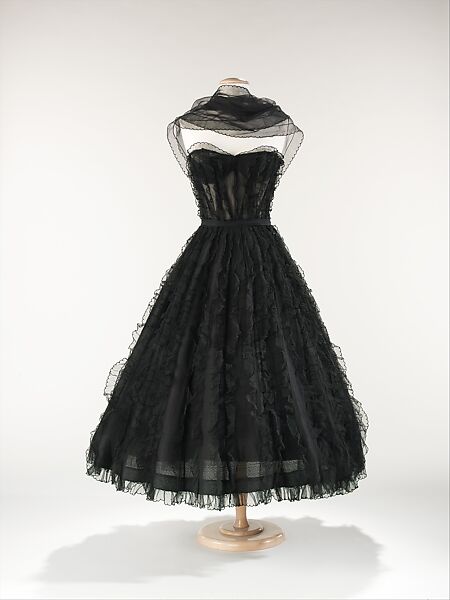
Mid–Late 20th Century: Revival, Couture Reassertion & Subcultural Rebellion
With the postwar fashion revival, lace reemerged as a marker of luxury and couture craftsmanship. Christian Dior’s “New Look” (1947) reinvigorated romantic femininity, bringing lace trims, lace bodices, gloves, and veils back into high fashion. Houses like Givenchy and Balenciaga further integrated lace into gowns and bridal couture, reasserting its status as a couture material.
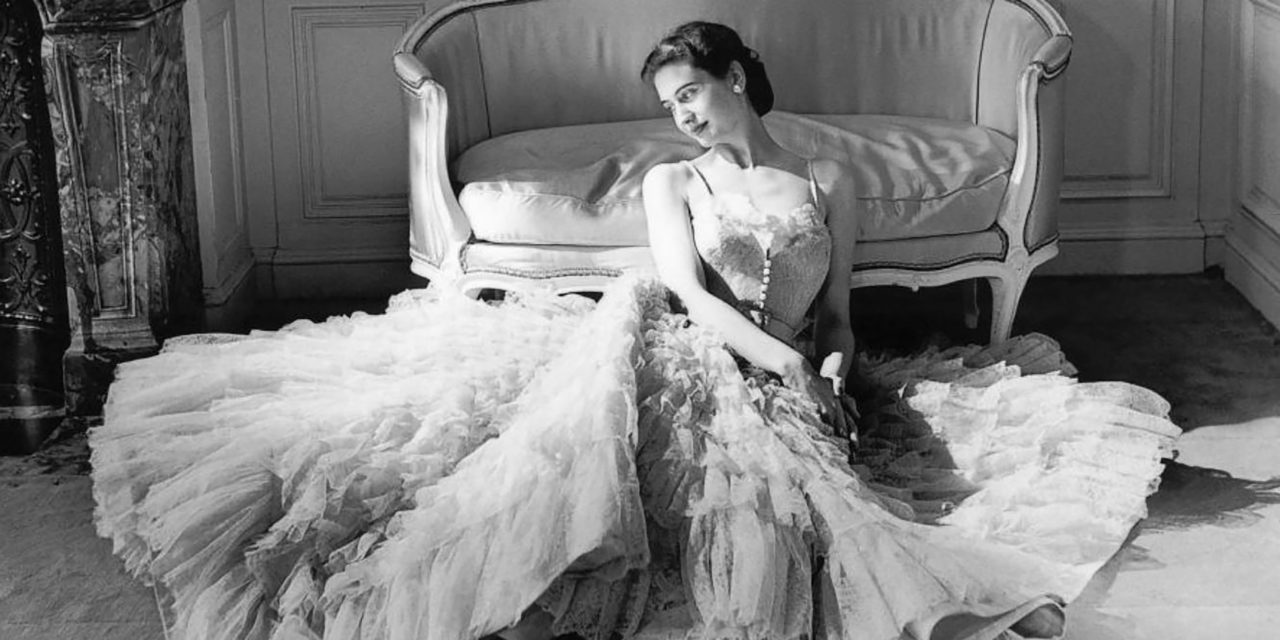
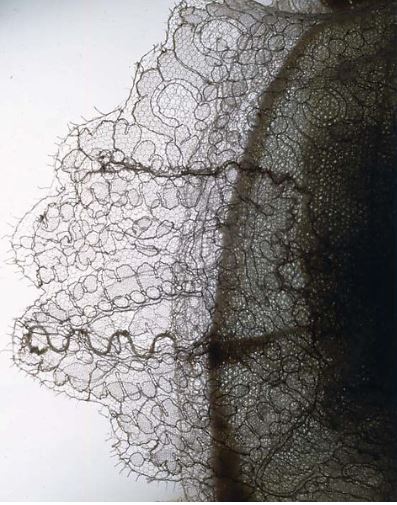
At the same time, lace became a vehicle for subversion. From the 1970s onward, punk, goth, and new romantic subcultures appropriated lace in contrast, layering black lace over leather, using shredded lace, or exaggerating lace jabots and cuffs in a camp or androgynous style. Icons like Prince and Boy George revived historic lace accessories (jabots, ruffles) in defiant, iconic fashion.
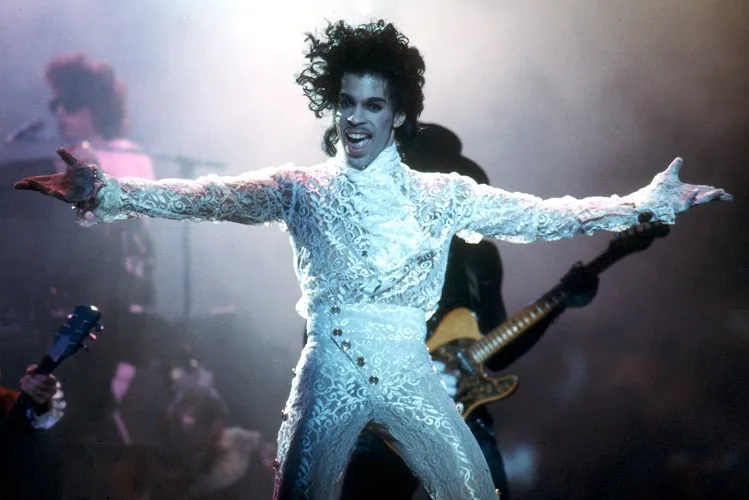
Designers also began to explore technological hybridizations: laser-cut lace motifs, lace appliqués on synthetics, digital embroidery, and experimental mesh/lace composites. These techniques blurred the lines between lace as craft and lace as a digitally mediated, structural element.
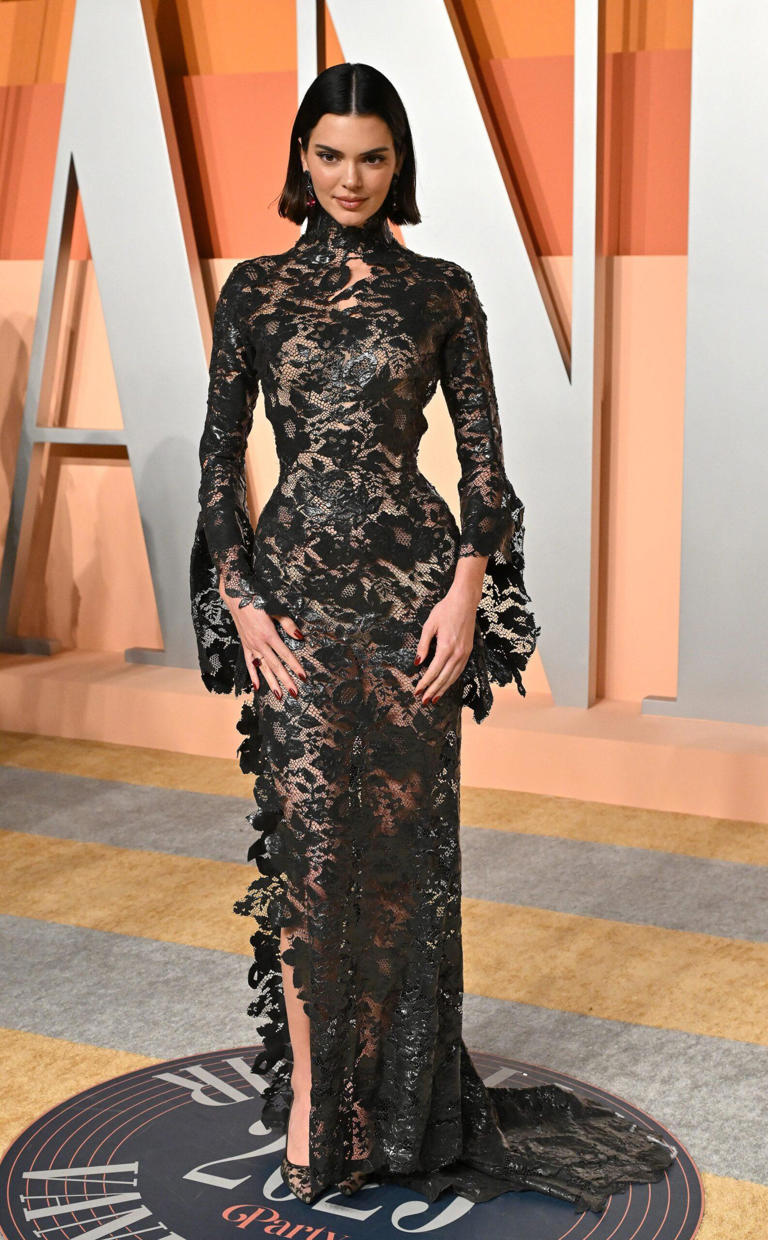
21st Century: Heritage, Identity, and Material Dialogue
In the contemporary fashion landscape, lace no longer commands singular meaning. Instead, it lives in the tensions between tradition and innovation, craft and technology, transparency and identity.
Many regional lace traditions (e.g. Burano, Alençon, Pag) have been revived and supported by heritage institutions, UNESCO recognition, and craft schools. At the same time, designers are pushing lace into new territory: laser-cut lace, 3D-printed lace structures, and computer-generated lace motifs now appear regularly in both couture and ready-to-wear.
Today, lace stands for heritage, irony, gender play, and material poetry more than explicit status. It features heavily in discourse about slow fashion, craft revival, and material storytelling. In fashion now, the interplay between void and structure, opacity and transparency often serves as a conceptual prompt, with lace used to express ideas about vulnerability, skin, layering, and identity.
.jpg)



